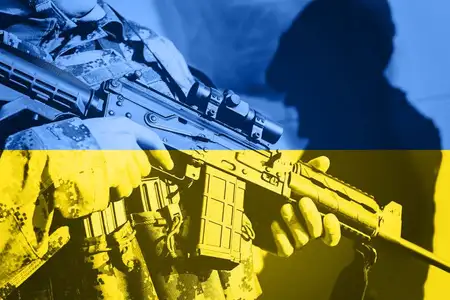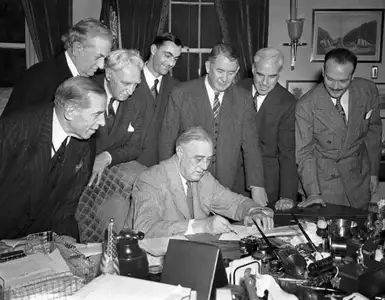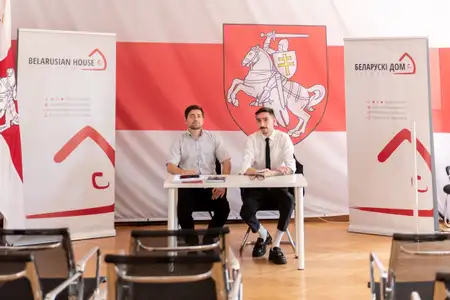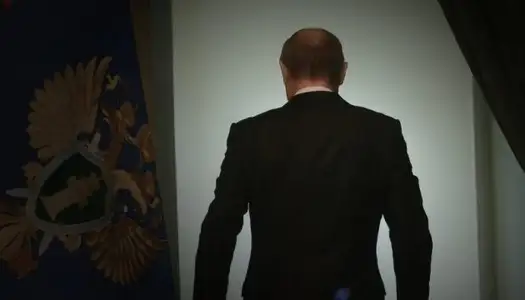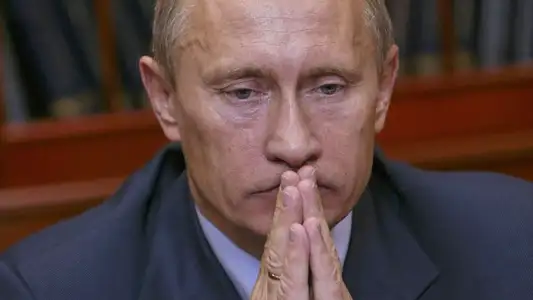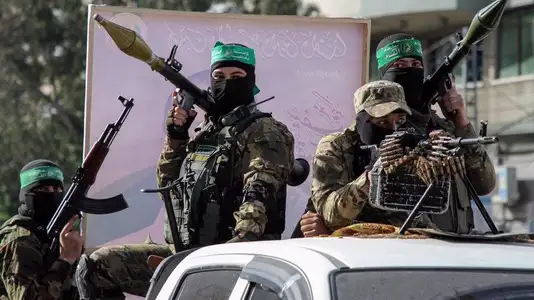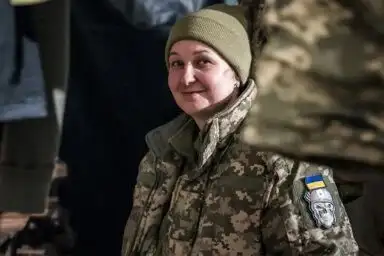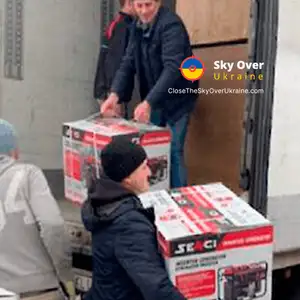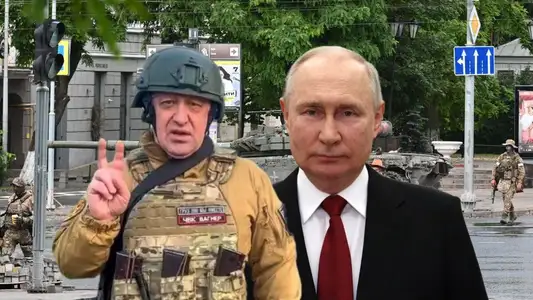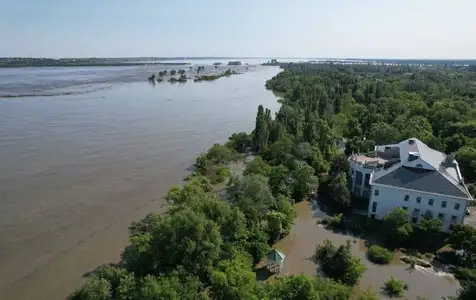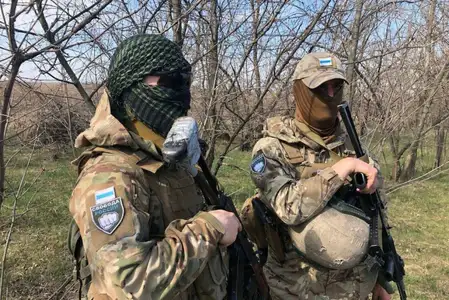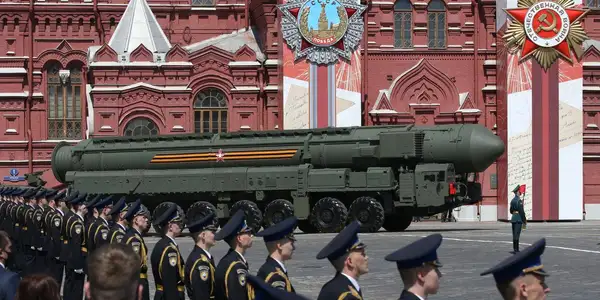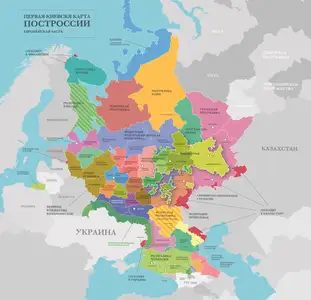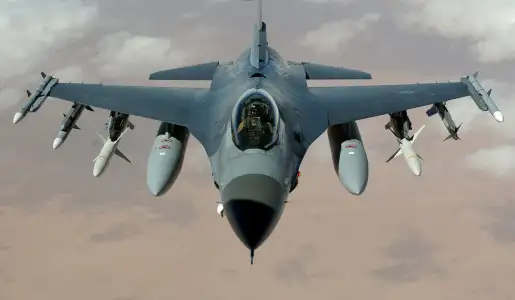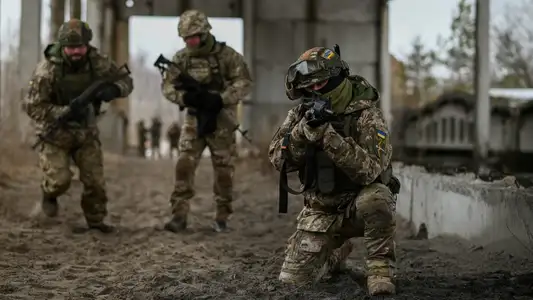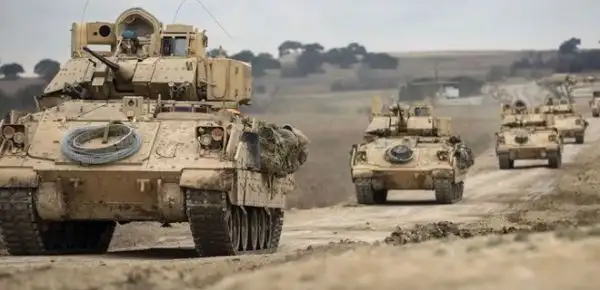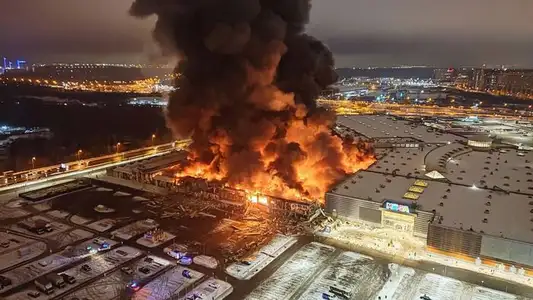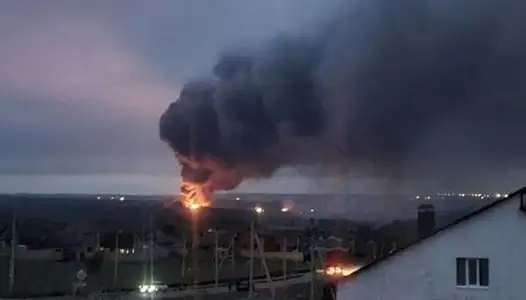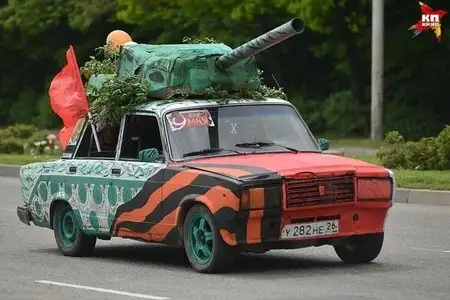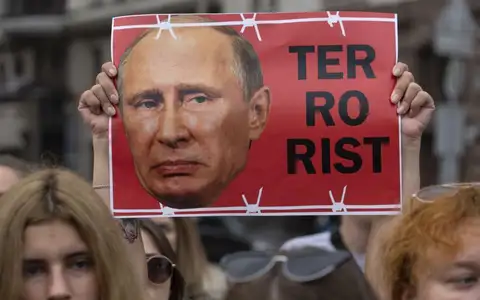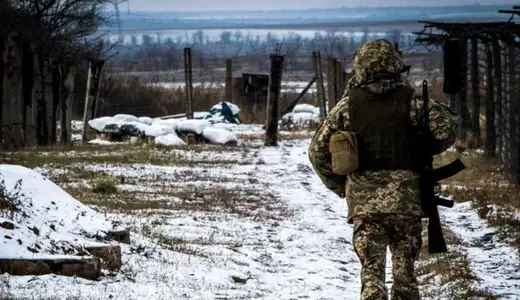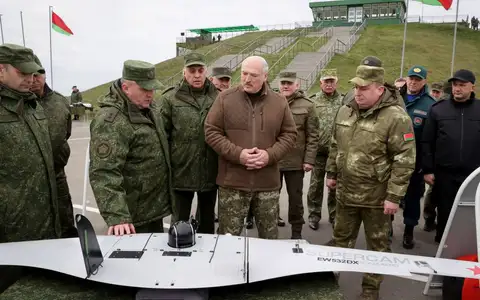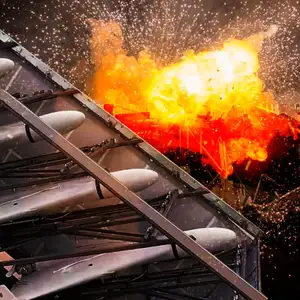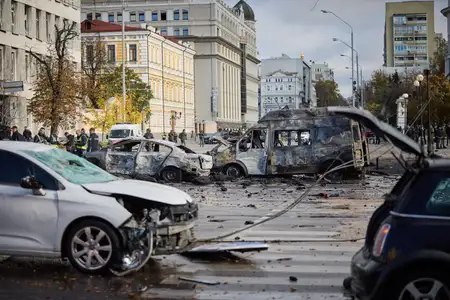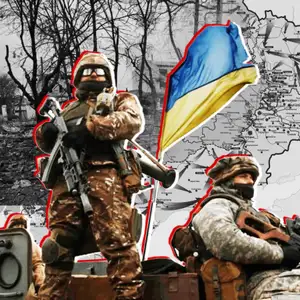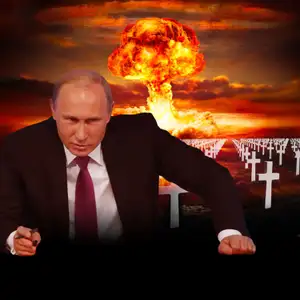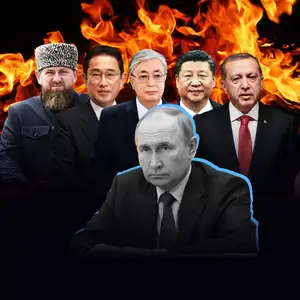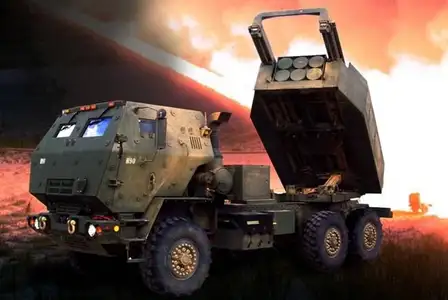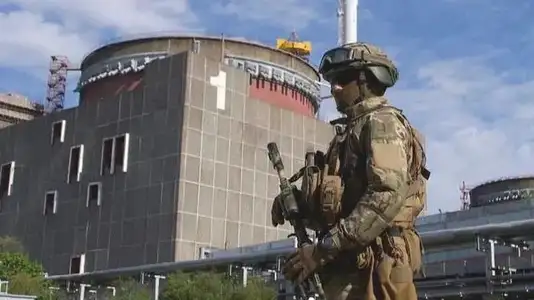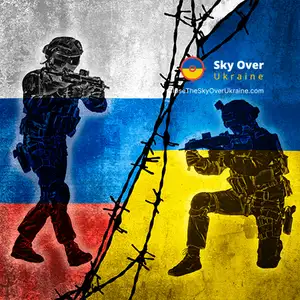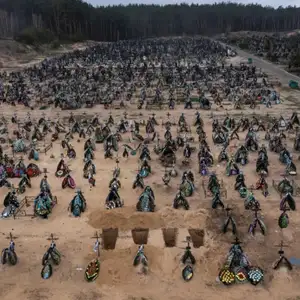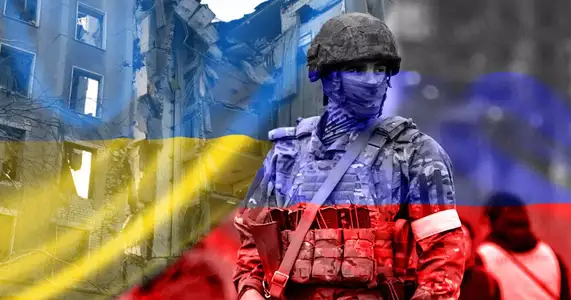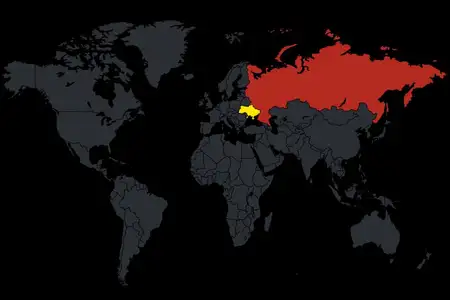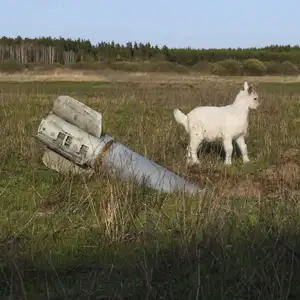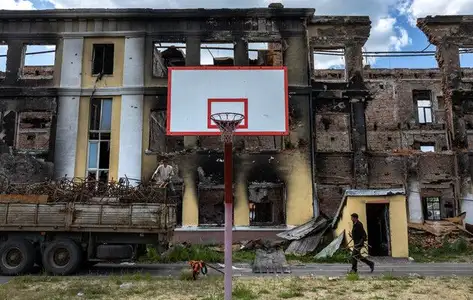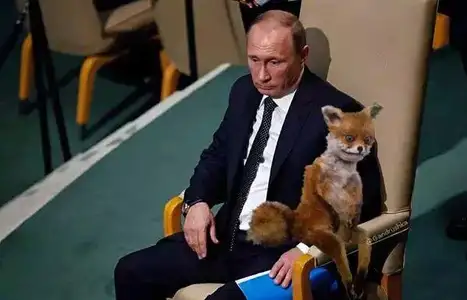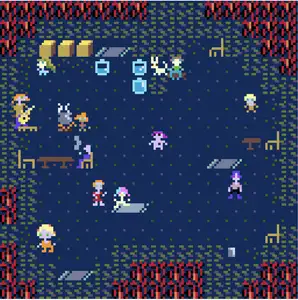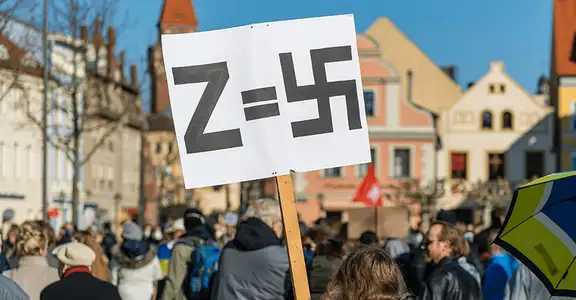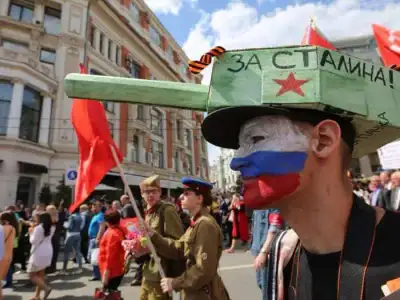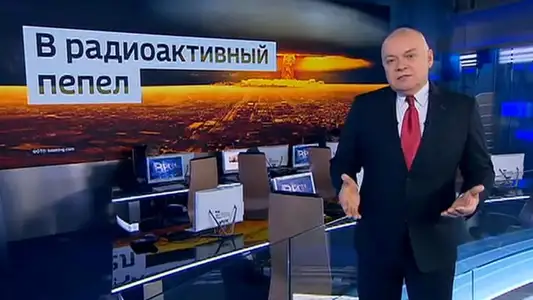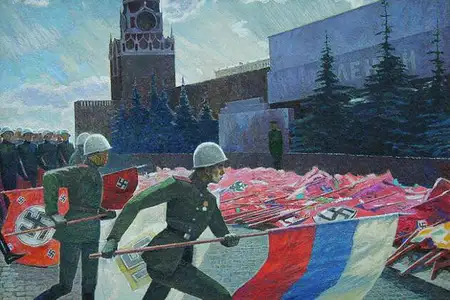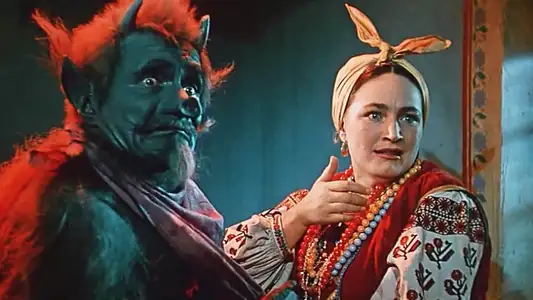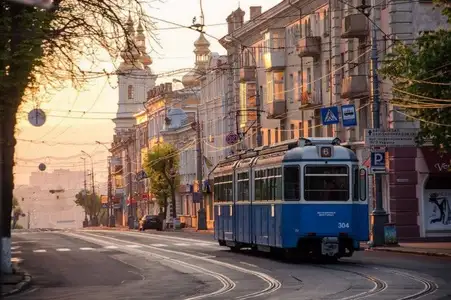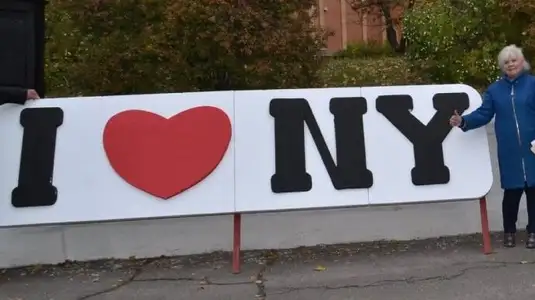In captivity of a terrorist state: Save Azovstal defenders
Prisoners of war is always a complicated issue. Especially when you fight a terrorist state. And the story of Azovstal defenders is particularly painful for us.
The terrorist attack in Olenivka, and now the upcoming “trial” of the Azov fighters are yet another cynical and inhuman attempt by the Kremlin to demonstrate its superiority. We’ve decided to tell you more about the defenders of the Azovstal plant, their heroic deeds and the current dire situation.
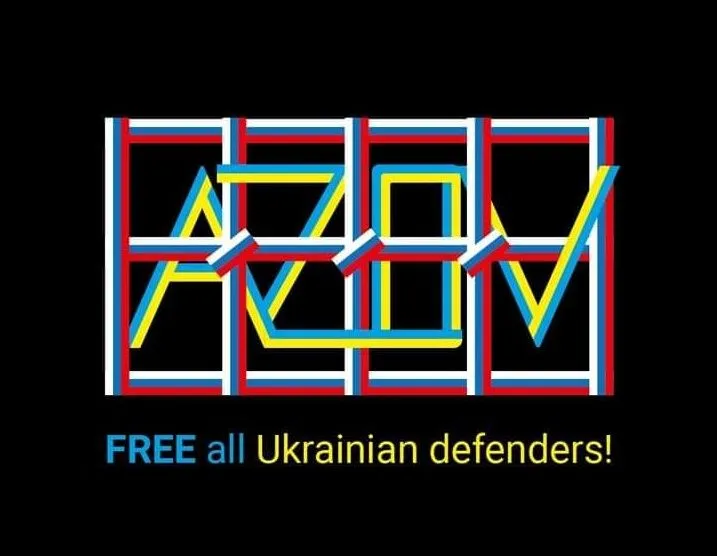
Image by Nikita Titov
The Heroic Defense of Mariupol and Azovstal
The story of Mariupol, once a beautiful Ukrainian city of half a million people in the Donetsk region, is one of the most tragic since the full-scale Russian invasion of Ukraine which began on February 24. The defense of Mariupol lasted 86 days. This is one of the main symbols of the heroic resistance of Ukrainians.
From the very beginning, the situation in the city was very difficult, as it was one of the main strategic targets of Putin’s troops. They tried their best to capture the city, but the Ukrainian soldiers fiercely resisted them. Heavy shelling and bombing were carried out day and night, and soon there was no electricity, water or gas in the city.
From the end of March, the city was practically besieged by Russian troops. People were dying from starvation, lack of medicine and water. Russian troops did not allow civilians to leave the city.
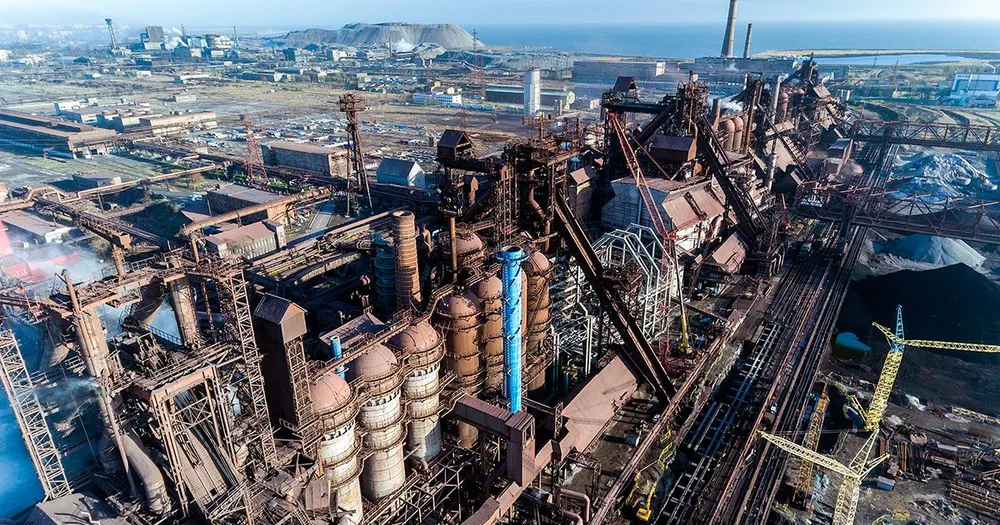
Azovstal plant before the invasion
Ukrainian soldiers were pushed back into the territory of Azovstal, a giant steel plant occupying a large part of the city. Among them there were fighters from the Azov Regiment of the National Guard of Ukraine, the 36th Marine Brigade, the State Security Service, the State Border Guard Service, the National Police and other units. While the Ukrainian military controlled Azovstal, the Russian command could not claim they controlled all of Mariupol.
The plant was completely surrounded, with heavy fighting every day. There were not only military personnel at the plant, but also many civilians hiding in a huge bomb shelter. With great difficulty the Ukrainian authorities managed to evacuate several hundred civilians in early May.
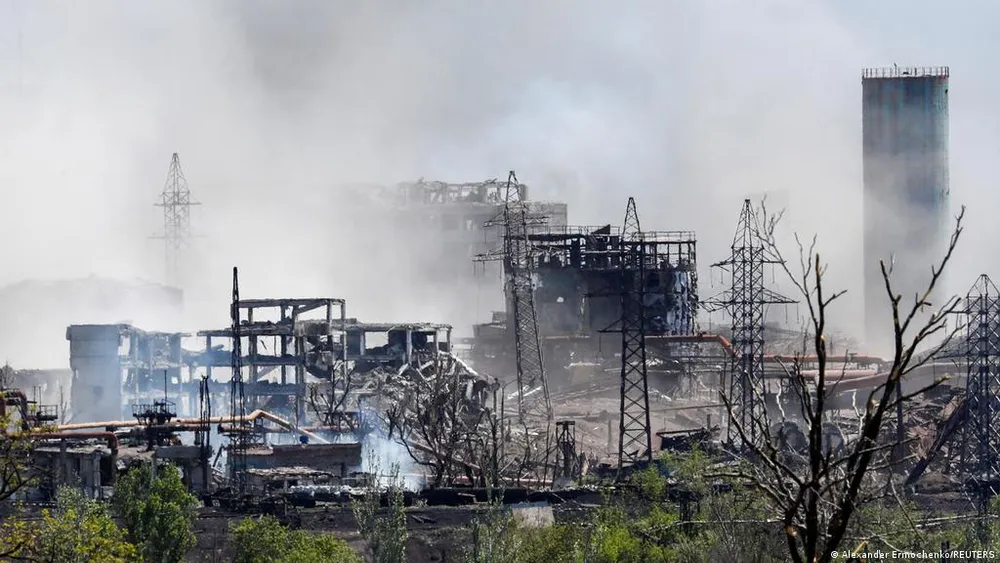
Damaged Azovstal plant
Leaving Azovstal and taking prisoner
At the same time, the Ukrainian side tried to save the Azovstal defenders. The extraction of military personnel was considered. Extraction is a form of military evacuation, when troops are removed from enemy-occupied territories to a safe zone.
Ukraine asked Turkey to transport wounded and not injured Ukrainian servicemen from Mariupol to its territory by its ships so that they would stay there until the end of the conflict. In early May, a similar initiative was put forward by the president of Switzerland. Putin flatly refused: “Civilians come out, the military surrender”. The Azovstal defenders, for their part, stubbornly refused to surrender, understanding the danger that awaited them in such a case, and wanted to stick to guns to the bitter end.

Azovstal defenders, photo by Dmytro Kozatsky
But by mid-May the situation had become crucial – the Ukrainian defenders no longer had the ability or resources to hold the plant. On May 16, the highest military command of Ukraine ordered the commanders of the units stationed at Azovstal to keep their personnel alive.
The Russian Ministry of Defense reported that an agreement had been reached to remove wounded Ukrainian servicemen from the blockaded Azovstal plant to the occupied territory of the Donetsk Region. The evacuation began that evening.
It lasted from May 16 to 20. Most of the servicemen were wounded, many had severe injuries. According to the Russians, 2,449 fighters from the Azov Regiment and other units were taken prisoner.
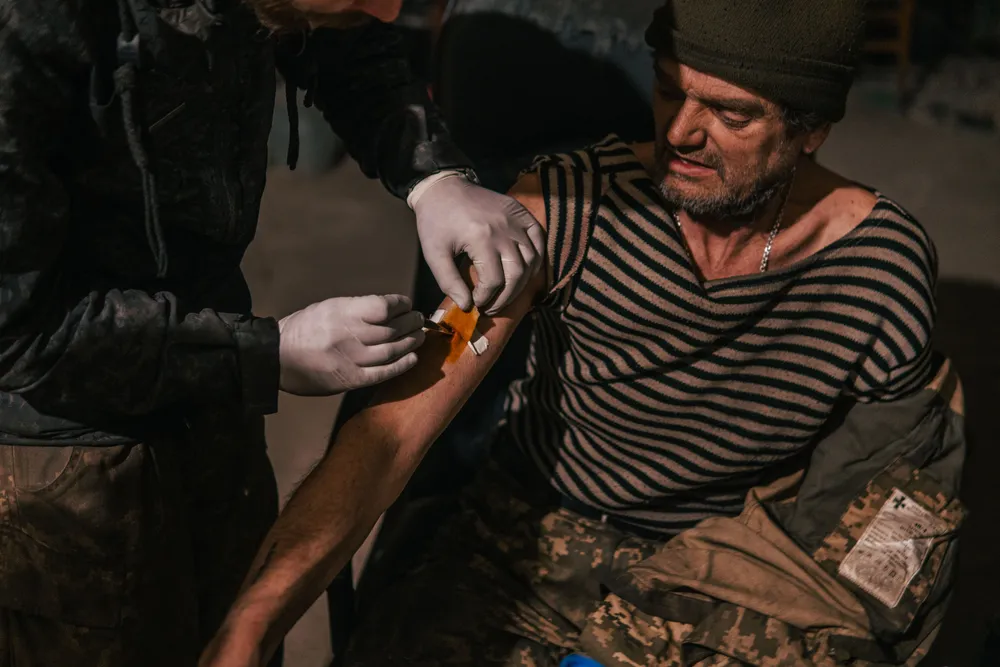
Azovstal defenders, photo by Dmytro Kozatsky
When the fighters were leaving Azovstal, above all they tried to ensure that Russia’s military intelligence servicewas solely responsible for their detention, so that the military had a chance to be treated under the Geneva Convention, had access to international organizations, etc.
Representatives of the Red Cross registered Ukrainian defenders as prisoners of war. The information gathered during registration should help the organization keep track of those who were captured and help them keep in touch with their families.
As far as was known, some of the prisoners were taken to the Donetsk pre-trial detention center, and some of the wounded were hospitalized. Most of the Azov servicemen were placed in the colony in Olenivka, Donetsk Oblast, and the commanders were taken to Moscow. Subsequently, we still have very little information about the places and conditions of captivity.
Three months in captivity: Key events
The agreements with the Russians were concrete and simple: the fighters must stay alive, no torture, separate compact confinement for those who left Azovstal, and their preparation for an exchange.
However, the Russian side was in no hurry with the exchange. On June 29, the first exchange took place, the largest since the start of the full-scale invasion: 144 fighters were exchanged, among them 95 defenders of Azovstal. Most of them were severely wounded and amputated.

Azovstal defenders, photo by Dmytro Kozatsky
After that, it is still impossible to agree on another exchange with the Russian side. On the contrary, the Russian Federation shows by its actions that the exchange of Azovstal defenders and, above all, the fighters of the Azov Regiment, of which there are the largest number, is not part of its plans.
Instead, Moscow’s plans include the use of Ukrainian POWs for its own political purposes. We saw this very clearly in the example of the terrorist attack in the penal colony in Olenivka. On July 29, an explosion there, according to the Russians, killed 53 POWs and wounded dozens more. The Russian side accused Ukraine of attacking the colony with HIMARS. However, there is too much evidence that the Russian version is completely untenable. CNN, for example, recently justifiably denied it. There is too much evidence to suggest that the explosion was set up by the Russian military itself.
Apparently, with this bloody terrorist attack, the occupiers were trying to achieve two main goals. First, to pressure the Ukrainian authorities and society in order to force them to “peace at any price”. Second, to conceal their crimes against Ukrainian prisoners of war (torture and even executions may be involved). It is also worth noting that the placement of POWs near the front lines is another violation of the Geneva Convention.
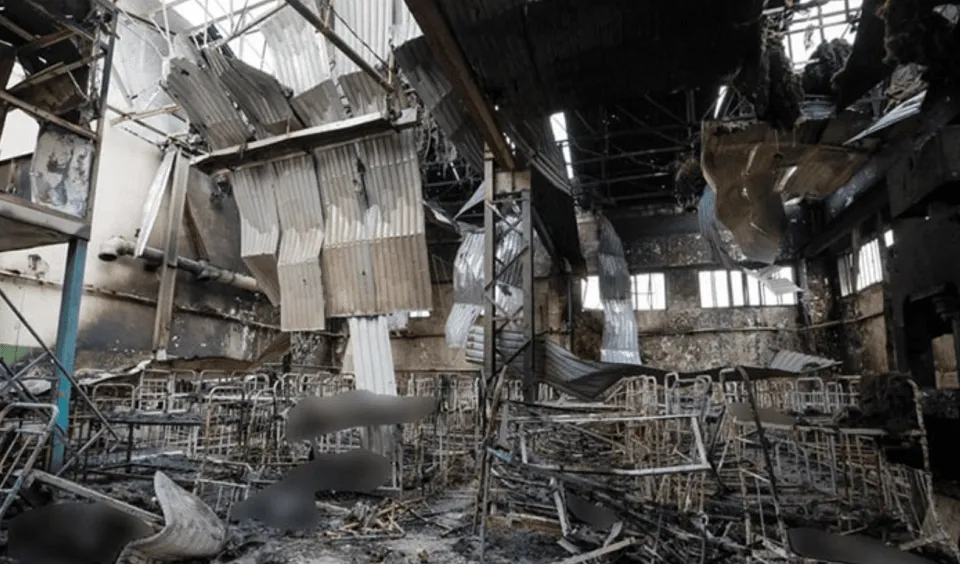
Destroyed building at the Olenivka colony
At a time when Ukraine and the entire civilized world regard Russia’s actions as terrorist, and countries are beginning to officially recognize Russia as a state that supports terrorism, the Kremlin continues to play its favorite “mirror game”.
On August 2, the Russian Supreme Court declared the Azov Regiment a terrorist organization and banned its activities on Russian territory. Russia calls the regiment “neo-Nazi” and accuses it of war crimes. The Azov members now face punishment of up to 20 years in prison. Before that, Russian media reported that more than a thousand military personnel who surrendered in Mariupol had been transported to Russian territory for investigation.
Of course, this is all being done for a specific purpose. Instead of an exchange, Russia wants to hold a so-called trial over the Azov servicemen.
Quasi-trial of the Azov fighters
Both “Donetsk People’s Republic” (“DNR”) leaders and officials in Moscow have reported on the “trials” being prepared, saying that the Ukrainians will be tried by an “international tribunal”. “The head” of the “DNR,” Denis Pushilin, announced that the first “tribunal” would be over the Azov servicemen in Mariupol. The almost totally destroyed city was chosen for that because Azov’s base was there. It was planned to begin in September. However, according to Mariupol mayor Volodymyr Boychenko, they want to start the trial as early as August 24, on Ukraine’s Independence Day. As we know, the Kremlin is very fond of symbolic dates.
What do the Russians need this “trial” for?
- Russian propaganda has long ago made the Azov Regiment the main enemy of Russia. All eight years of the war against Ukraine, in Russia (and abroad) a negative image of the Azov Regiment was created, and propagandists elevated them to the rank of nationalists and even “Nazis”. The regiment itself denies any ties to neo-Nazis. When the unit was created in 2014, it did include a certain number of representatives of far-right organizations, but over time, as experts point out, it “de-ideologized”. The Azov Regiment (officially called Azov Special Operations Detachment) is a subdivision of the National Guard of Ukraine, a completely legal armed formation that has nothing to do with terrorism and Nazism.
- In the summer of 2014, Azov forces drove Russian troops back from Mariupol, and then this city, which was strategically and symbolically very important, was retained and remained under Ukrainian control. That is why it is in relation to Azov that the Russian command feels such hatred and longs for revenge. Revenge for the fact that Azov fighters actually defended their land, their homes, and their families and fought Mariupol back in 2014.
- At the same time, the Russian authorities want to stage a showdown with the Azov fighters in order to strengthen the political position inside Russia. This should be a spectacle for Russian citizens. And the Russian citizens, twisted by propaganda, are waiting for this reprisal – so that Putin can use this example to show that Russians are the strongest, that they “successfully fight against Nazism”, and that “the victims (of Russians) are not in vain”. Parallels with the Nuremberg trials can even be used for propaganda purposes.

A cage for the “trial” at the Mariupol Philharmonic
Recently, Russian media showed how Russian occupiers are already mounting cages of 20mm steel framework on the stage of the Mariupol Chamber Philharmonic. There are four cells in the basement for Ukrainians. Between the cages and cells there are passages made of the same framework. The building was chosen because it is large and was not damaged in the fighting. Ironically, even the location itself testifies to the “theatricality” of the action.
Why is the “trial” of the Azov fighters completely illegal?
In essence, a show trial is being prepared, a farce, the outcome of which is known in advance. As a matter of law, this “trial” is absolutely illegal – it is outside the legal framework. On the contrary: all those who will organize and conduct such a trial will themselves commit the gravest crime, the lawyers point out. Russia continues to add to its “collection” of laws and regulations, which it violates.
- First, any prisoner of war is a combatant, a member of an armed conflict, and he has relevant legal immunity. A POW can be tried for war crimes, crimes against humanity, etc. But he cannot be tried merely for participation in an armed conflict. And the Azov fighters are covered by all international conventions, which refer to the protection of the rights of prisoners of war.
And what charges will be brought against them? “Violation of the territorial integrity of the “DNR”, “terrorist attacks”, “mercenary activities”… But in essence they are being convicted precisely for participation in the armed conflict, which is illegal since they are officially Ukrainian servicemen.
- Secondly, the trial of POWs in the absence of guarantees of a fair trial is impossible. In a court of law, equal rights and opportunities should be provided for the prosecution and the defense, the accused should be provided with legal assistance, witnesses should be interrogated, and so on. If these guarantees are not provided, the court itself will constitute a war crime!
- Naturally, these “courts” will not be recognized by civilized countries. But in order to make this trial look “fair” in the eyes of the Russian public, the Russian Federation has prepared in advance.
On July 1, the unrecognized “DNR” adopted a new criminal code with provisions for the death penalty. In other words, the death penalty for war crimes, including mercenary activities, was allowed. Russian law does not provide for such punishment. Thus, the Russian Federation, by exercising “justice” on the territory of the “DPR” actually unties its hands and can pass sentences that it could not have passed within its own territory.
- By the way, the Russian authorities and their puppets violate another provision of international humanitarian law with this “trial”: it is forbidden to expose POWs to the public. Prisoners of war must be hidden from the public.
- Thus, this is an outrage that has nothing to do with a trial. This mockery of the very notion of trial and justice is yet another crime committed by the Russian Federation. The Russian Federation itself is now more like a gang, not a state, which does not recognize any international agreements and norms.
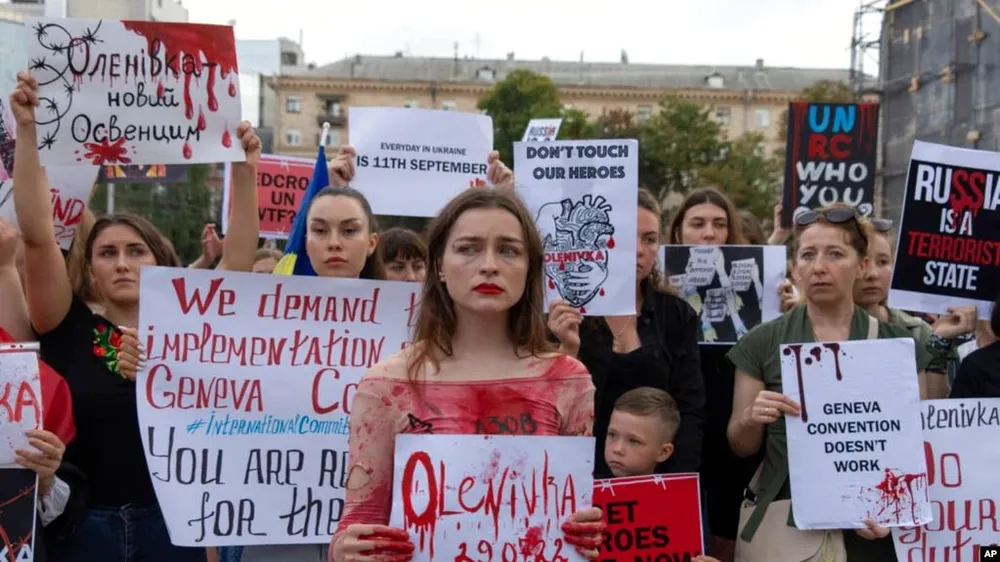
A rally in Kyiv, August 4 (AP Photo/Efrem Lukatsky)
Every time we talk about it, we tell about it to the whole world, we collectively create an international collective rejection of this “trial”. If the Russian Federation does carry out this farce, the entire international political and media community must react as active as possible.
Is it possible to rescue Azovstal defenders?
Ukrainian military experts point out that there are several ways to free them from the captivity.
- A large-scale exchange. But to do this, Ukraine needs to launch a counterattack, during which it will be possible to take a large number of Russian soldiers as POWs as an exchange fund: one Ukrainian soldier to exchange for several Russian soldiers. In order for Russia to go for the exchange, we need a lot of Russian POWs, and it should be valuable personnel. The Russians will categorically not agree for a simple 1:1 exchange – the value of the Azov fighters for both Russians and Ukrainians is too great.
- A special operation to rescue them. But a liberation raid is practically impossible because the Donetsk region, where most of the POWs are held, is very well fortified. Therefore, such a raid would be associated with heavy losses on the Ukrainian side. In addition, the entire area around the colony is probably mined. And in the case of an attempted assault, both the attackers and the POWs themselves could be killed.
- The only possible military option is to seize the territory where Ukrainian prisoners of war are held, but again as part of a large-scale counterattack. But here we have to wait.
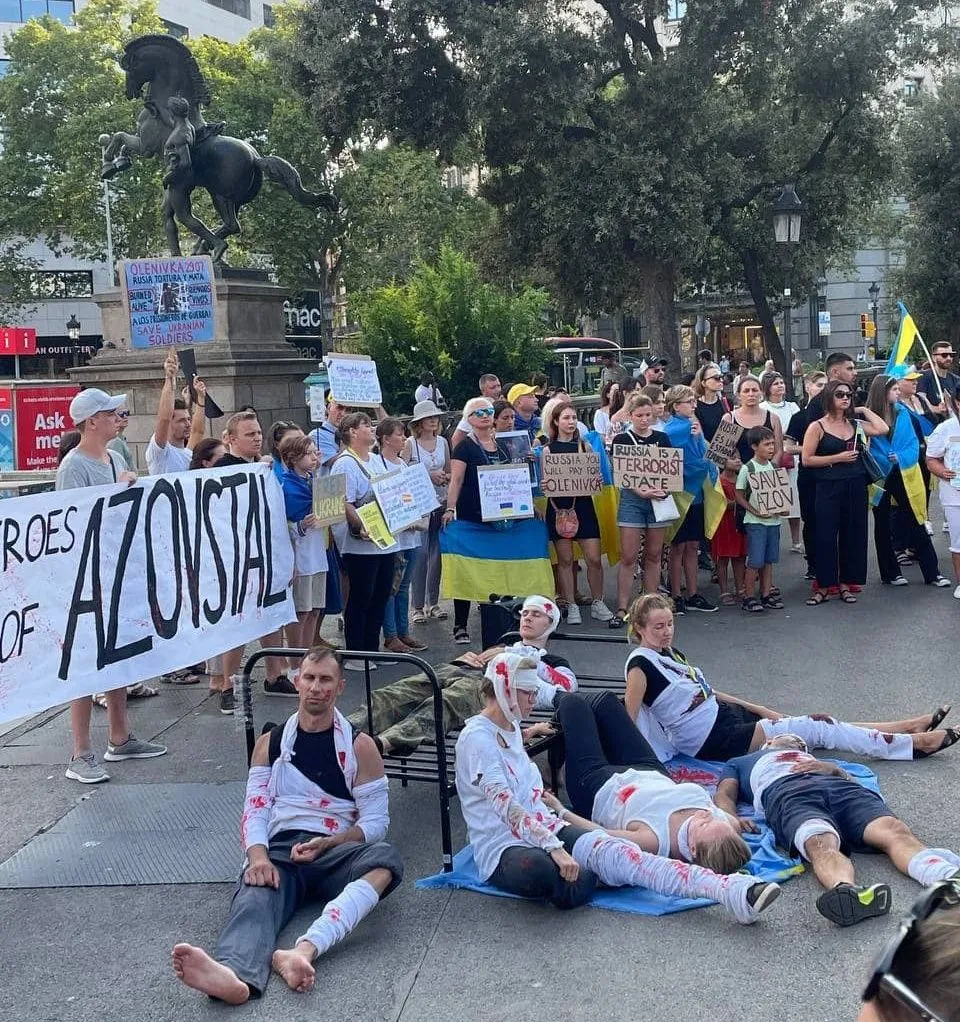
An action in Barcelona, August 14 (Source)
What remains for us in this situation is to raise this painful issue over and over again. The Ukrainian authorities do not tire of doing this in all possible international forums. All possible organizations – public, human rights, religious, political, international – are involved in the process. At the political and diplomatic level, all measures are being taken to get the Ukrainian military out of captivity.
What is being done to rescue them?
Ukraine calls on the entire civilized world to prevent the announced “trial” of Ukrainian defenders in Mariupol and demands that representatives of the United Nations and the International Committee of the Red Cross be sent immediately to the places where Ukrainian POWs are held.
Mykhailo Podolyak, adviser to the head of the Office of the President, called the preparation of the “trial” of Azovstal defenders an official Russian war crime: “The “Mariupol cells” are an official Russian war crime. It is time for the Red Cross and its president to remember their appointment and think about their reputation”.
As a reminder, after the terrorist attack in Olenivka, the International Committee of the Red Cross stated that it did not guarantee the safety of the Ukrainian defenders who came out of Azovstal. Ukraine expects from the organization more decisive actions in regarding the POWs.
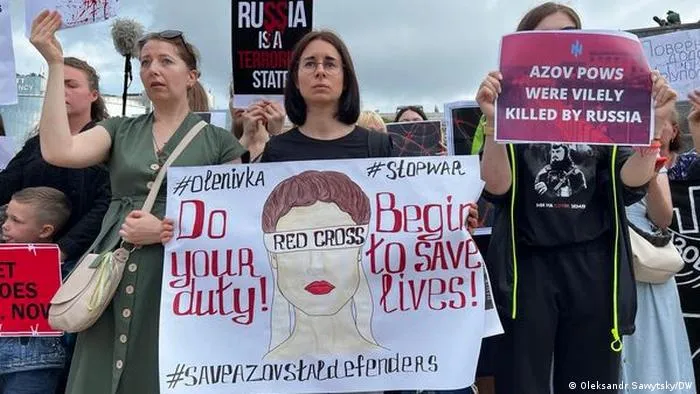
Ukrainians call on the Red Cross to act, a rally in Kyiv, August 4 (Source)
The Association of families of Azovstal defenders appealed to the International Committee of the Red Cross and the UN regarding the preparation by the occupiers of the so-called tribunal for Azov servicemen and called to prevent the reprisal of the Ukrainian military. On August 12-14, rallies and actions were held in many capitals and cities around the world to demand the release of the Azovstal defenders.
Despite all the hardships and deprivations, the Azovstal defenders are steadfast, and we follow their example. For us, they will always be our heroes, ready to do almost impossible things for the sake of Ukraine.
Not to keep silent, to talk more about the problem of Ukrainian prisoners of war who are held hostage by Russian terrorists is something we can and should do. Ukraine expects world leaders and organizations to act more decisively to help bring our prisoners of war back alive.
Anastasiya Glotova

